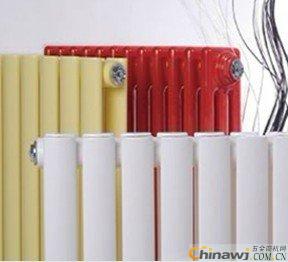Material
Radiators are typically made from various materials, including steel, aluminum, copper, and cast iron. Steel radiators come in different configurations such as double-column, triple-column, quadruple-column, quintuple-column, and sextuple-column designs. Aluminum radiators include die-cast models, steel-aluminum composite units, and all-aluminum types. Copper radiators, along with copper-aluminum composites and even superconducting radiators, are also used for specific applications. Cast iron radiators, although traditional, are now being phased out in many regions due to their weight and corrosion issues.
Production Process
The manufacturing process involves several key steps. First, for molds with high-density teeth and large tongue ratios, the aluminum rod should be short or pure, measuring 150-200 mm in length. Before testing, the extrusion center must be properly aligned, ensuring that the extrusion shaft, ingot cylinder, and mold base discharge port are on the same line. During both testing and production, the aluminum rod's heating temperature should be maintained between 480°C and 520°C. Mold temperature is typically set at 480°C, and for molds with a diameter below 200 mm, the holding time should not be less than 2 hours. For larger molds over 200 mm, the insulation time should range from 4 to 6 hours to ensure uniform core and surface temperatures.
Before starting tests or production, the cylinder liner must be cleaned using a clear gasket, and the extruder’s operation should be checked. In test mode or at the start of production, the automatic cutting function of the extruder should be disabled, and all switches should be reset to zero. Begin with low pressure, allowing about 3-5 minutes of discharge while controlling pressure within 100Kg/cm². The ammeter reading should stay between 2-3A. Once the aluminum filling process is stable, gradually increase the speed, keeping the extrusion pressure below 120Kg/cm². If any issues like mold blockage, small teeth, or fast deviation occur, stop the machine immediately and unload the mold to prevent damage. Throughout the process, ensure the discharge port remains unobstructed, adjust the pad support or clamp according to the flow condition, and monitor for any abnormalities, stopping the machine if needed.
During the straightening process, carefully check before and after changes, follow operating procedures, apply moderate force, and maintain strict quality control. When cutting, choose an appropriate length based on the production plan, avoid fast feed speeds to prevent end damage, and secure the ends to remove burrs and flash. Packaging should be standardized, with mats placed properly to protect the profiles during transport. The aging temperature for the profile should be controlled at 190±5°C, with a holding time of 2.5 to 4 hours, followed by air cooling after furnace discharge.
Jinan radiator sales: National Standards
National Standard of the People's Republic of China GB/T 13754-92
Industry Standard
According to Announcement No. 10 issued by the Ministry of Construction of the People's Republic of China, certain technologies and products are promoted for use in residential buildings. This includes restrictions on gray cast iron long-wing radiators, elimination of gray cast iron garden-wing radiators, and removal of the gray cast iron 813 model.
Local Standard
The Tianjin Municipal Government Heating Office and the Industry Management Office issued a directive requiring new and old buildings to use non-cast iron radiators, with aluminum radiators featuring anti-corrosion properties allowed. Similarly, Liaoning Province’s construction department restricted the use of gray cast iron 813 radiators in all projects, with a complete phase-out by the year 2000.
Function Description
Radiators serve to enhance airflow and flow rate through the unit, increasing heat dissipation capacity and helping cool engine components. The fan, typically an axial-flow type, is installed between the engine and radiator and driven coaxially with the water pump. It is mounted on the pulley or flange at the front of the pump shaft. Fan performance is influenced by factors such as diameter, speed, blade shape, angle, and number of blades.

Jiangsu Zhongyi Tools and Riggings Co., Ltd. , https://www.zy-rigging.com